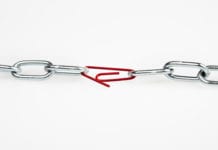In my post yesterday I featured the compelling story of Blake Mycoskie and TOM shoes. After hearing him at the Leadership Summit this past year I was very impressed with his vision and company; so I thought I would pass this along to others through my blog. However, sometimes the comments on my blog are more insightful than the posts. That is definitely the case yesterday when David Stupay, who is doing development work in Tanzania and a part of COMMUNITY posted an honest and candid critique of how Mycoskie and TOM may be an example of how helping hurts.
The following is David Stupay’s comment:
Dave – This may not be as great of an idea as it is marketed to be. While they are doing good by putting shoes on the feet of needy children in impoverished countries, this type of aid does more harm than good.
The shoes are distributed in 24 countries, are only made in 3 countries. That means that 21 of the countries where the gifted shoes are delivered receive no economic benefit from the distribution of free shoes, and local shoe merchants and manufacturers (or potential manufacturers) are actually discouraged from doing business in these countries.
It is easiest to see the hit to local merchants that distribute shoes in impoverished countries. As COMMUNITY participated in the Stuff for the Poor shoe drive, you know that used shoes are often shipped from the US and other Western countries to Africa and other parts of the developing world. This is big business for the shippers, brokers, and the local merchants. Local shoe stores in developing countries generate solid cash flow and above average profit margins. When shoes are distributed in communities for free from TOMS and other programs, these local merchants miss out on much needed sales opportunities. While not all the children that receive donated shoes from TOMS could afford to buy shoes from these local merchants, a hit even as low as 10% of their customer base would be enough to put many of these small merchants out of business.
An even greater impact of this type of program is that it discourages manufacturing in developing countries. Manufacturing is the reason that SE Asia has been able to lift so many people out of poverty in a way that Africa has not. Africa has yet to see strong manufacturing based economies emerge, thereby leaving many of their people in extreme poverty. Ideas like this discourage investors and entrepreneurs from competing in this arena, and contribute to the poverty trap in Africa. TOMS is a direct threat to manufacturers that are currently, or are considering in the future, competing in the African shoe market. What developing countries really need are local manufacturing companies that create low cost products for sale in developing countries. This would create assembly, management, distribution, and sales positions for shoes, and would develop an economy that isn’t dependent upon foreign aid.











